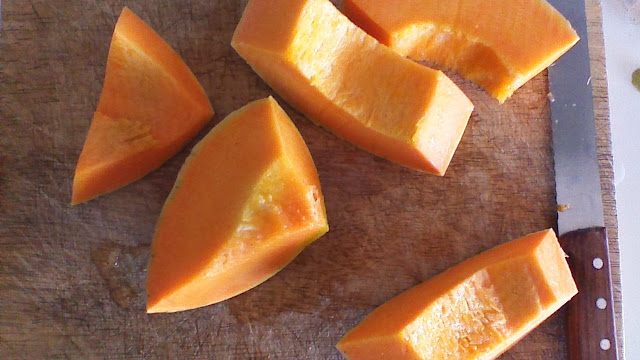So how was my first day alone you may ask? Before now I have always had Guiseppina by my side, instructing me in the kitchen, with chores, running errands... and now I am on my lonesome. Of course I really miss my Italian Nonna but, to avoid moping about and wasting my remaining weeks, I have decided to seize the chance to be a temporary, independent Italian! With that in mind, after doing a few household chores, I strode out of my front door and into the cobbled streets and piazzas beyond (Well this isn't entirely true... I initially got stage fright, curled back into bed and watched The Great British Bake Off on my laptop). This was all because my dad had set me a challenge to help me keep up my Italian, and make the most of my time in Italy: Each day I am to go into a shop or café and make conversation, I can't just go in and buy something (anybody can point and say 'per favore') I am to find out something new, ask for advice, or simply chat to somebody. Today I decided to take advantage of the somewhat fraught political situation and buy a newspaper... and I managed to request a little introduction to the political position of each paper at the same time - cultured eh?
Anyway, feeling a little proud and a tiny bit Italian, I felt confident enough to start making pasta. It was actually incredibly simple and surprisingly quick (about 40mins start to finish, including 20mins resting)... all you need is a large work surface and a rolling pin.
Serves 1-2 (easily doubled, tripled...)
100g spelt flour
1 egg
And a little water (this may not be needed, it depends on the size of your eggs)
I would serve this quantity with half a portion of the tomato sauce from my spaghetti al pomodoro post.
- Pour the flour into a mound on a clean work surface.
- Create a well in the middle and crack the egg into it.
- With a fork, beat the egg and gradually combine the flour (keep tapping in extra flour from the sides of the well).
- When it becomes tough to work with a fork, resort to your hands and work it all in.
- If you used a small egg, you may need a little extra water as you want a slightly sticky dough which you can then kneed until smooth.
- Lightly flour your work surface (and hands) and kneed the dough for about 10 mins until smooth.
- Wrap in clingfilm and set aside for about 20 mins.
- After 20 mins, unwrap and roll out on a floured surface until about 1mm thick (you can use a pasta machine if you prefer).
- Cut into tagliatelle strips with a knife, or a special roll along cutter if you have one.
- Dust the pasta strips with a little extra spelt flour and spread them out with your fingers to allow them to dry for a couple of minutes.
- Bring a pan of water to boil and when you're 30 seconds from being ready to eat, drop in the pasta (it should only take a matter of seconds to cook - it will rise to the top once ready).
- Enjoy with whichever sauce you fancy.








































